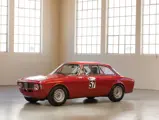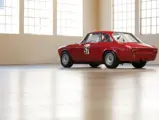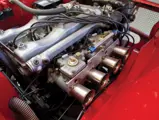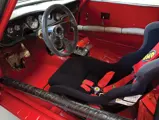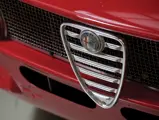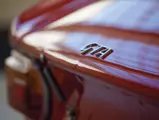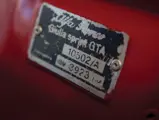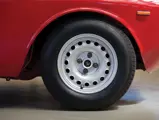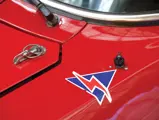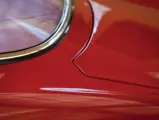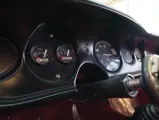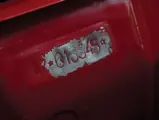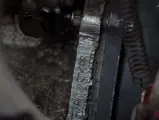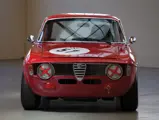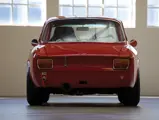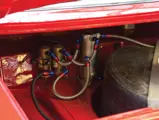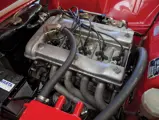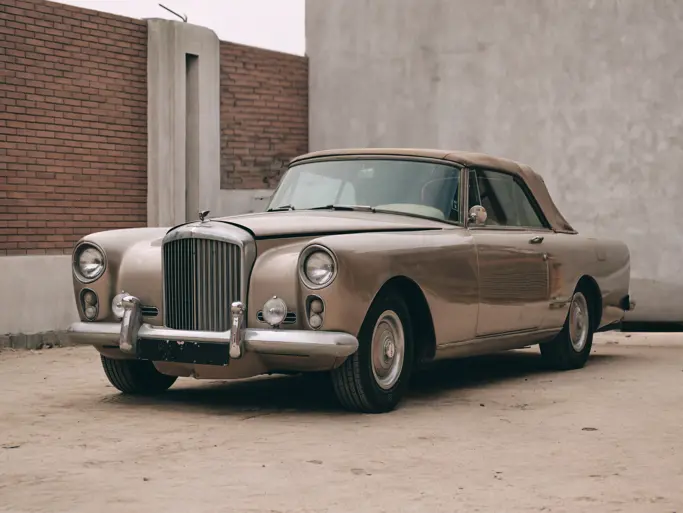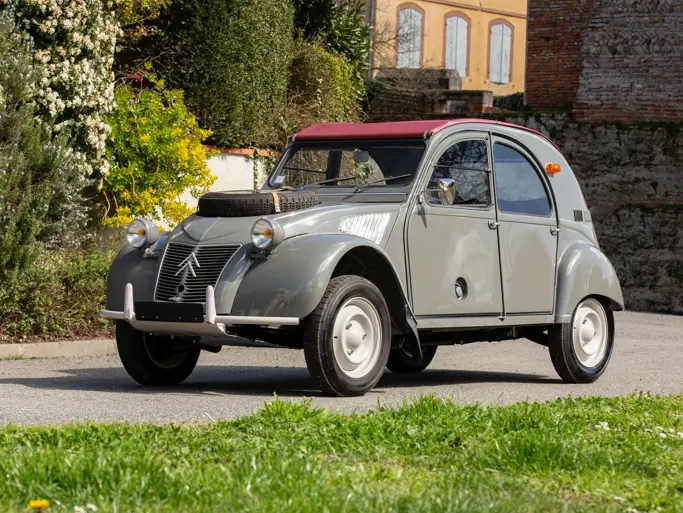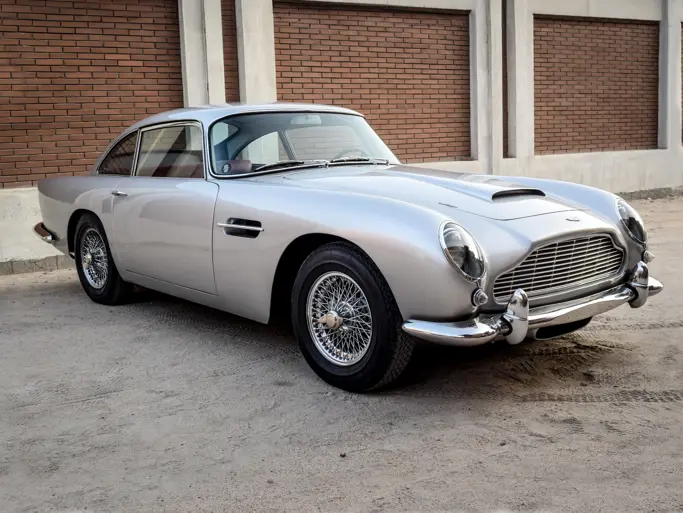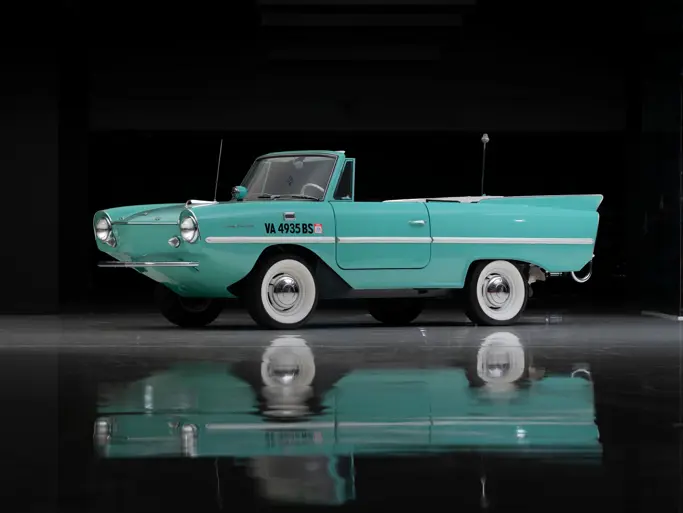London 2014
1965 Alfa Romeo Giulia Sprint GTA by Bertone
{{lr.item.text}}
£123,200 GBP | Sold
 | London, United Kingdom
| London, United Kingdom
{{internetCurrentBid}}
{{internetTimeLeft}}

- Set up for vintage racing events
- Pre-1966 U2TC, Nürburgring Marathon, and FIA Touring Car competition history
- Fine example of Alfa Romeo’s lightweight rocket
Est. 170 bhp, 1,570 cc DOHC twin-plug inline four-cylinder engine with dual Weber carburettors, five-speed manual transmission, wishbone front suspension, live rear axle suspension, and four-wheel disc brakes. Wheelbase: 2,350 mm
In the early 1960s, Alfa Romeo made a concerted effort to get back to its racing roots, and they decided to do this by capitalising on its new Giulia line-up with a competition model. The Giulia was the result of a thorough evolution of the post-war sensation Giulietta, itself a remarkably sporty and accessible range of vehicles, and the sophisticated Giulia line-up was anchored on the performance end by the Bertone-designed Sprint GT Coupé.
The Sprint GT Coupé was penned by Giorgetto Giugiaro and lived up to its name, as it had a five-speed manual gearbox, a high-revving inline four-cylinder engine, and four-wheel disc brakes. So sophisticated was the Sprint GT that even at the end of the model’s life more than a decade later, it was still heralded by journalists all over the world. Perhaps most telling for performance-minded drivers, the Sprint GT was underpinned by a remarkably taut chassis that begged for more than casual driving. The two-door coupé was as natural on the race track as it was on a winding Italian mountain hairpin, and it instantly seemed like the perfect starting point for Alfa Romeo’s Autodelta motorsports division.
Autodelta was conceived and run by the legendary Carlo Chiti, and it successfully brought Alfa Romeo back to the forefront of racing by the mid-1960s. Chiti himself had just returned to Alfa Romeo after a stint at Ferrari that saw the creation of the 156 sharknose that Phil Hill drove to victory in 1961. Using the Sprint GT as its base, the Giulia Sprint GTA—the “A” standing for alleggerita, or lightweight—arrived in 1965 at the Amsterdam Motor Show with significantly lighter Peralumin 25 aluminium bodywork bonded and riveted to its steel structure. Magnesium wheels, Plexiglas side windows, minimal interior décor, and aluminium suspension bits further hinted at its competition pedigree.
A twin-spark, dual-ignition cylinder head and upsized carburettors set its 1.6-litre engine apart from that used in the standard car. These modifications, combined with a Ferrari Dino-sourced Marelli distributor, bumped the GTA’s power to 113 horsepower in road configuration and 170 horsepower when amped up for track use. Putting all that power to the rear wheels was a modified five-speed manual gearbox with a magnesium casing, which had closer ratios for track use and machined gears to reduce weight and provide for faster shifts. The GTA weighed in at an astounding 200 kilograms less than the stock Giulia Sprint GT, and it proved to be a formidable track car.
For homologation purposes, approximately 500 road going stradale and race-setup corsa GTAs were built between 1965 and 1969, both in left- and right-hand-drive configurations, and many of which naturally wound up being privately used in competition. A pair of prototype GTAs even completed the Monza 1,000 KM and a hill climb in France, at Mont Dore, in 1965. Although the GTA was a forgiving car to drive on the track, it proved early on to be ferocious with the right driver behind the wheel.
The GTA’s official racing debut occurred on 20 March 1966, when Andrea de Adamich and Teodoro Zeccoli drove it to victory in the Jolly Club Four Hour Race. GTAs later went on to help Alfa Romeo and Autodelta win the European Touring Car Championship for three consecutive years, beginning in 1966. Other competition GTAs were later developed for specific uses by Autodelta, including a model for the 1300 class that took aim at the Mini Cooper and variants with larger engines that saw success over the Atlantic in America.
The car offered here, one of the first GTAs produced, was originally delivered new as a stradale version to Alfa Romeo’s Swiss operations in 1965. It was gently used on the road for nearly its first 30 years, but the GTA’s true inner competition car was unleashed in the early 1990s by Gaetano Petralia, of Auto Neuser in Nürnberg, Germany, for new owner Eberhard Stock.
After racing the GTA successfully with noted German racing driver Bernd Hahne for more than a decade, Stock eventually sold the car to Ivan Scotti, who campaigned it successfully in the U2TC series and on the Nürburgring’s Nordschleife.
Today, the GTA remains in beautiful race car condition, and it is eligible for entry into numerous vintage motorsports competitions. It is finished in Alfa Romeo’s signature Rosso Corsa red and features a variety of enhancements and upgrades that have been designed to allow drivers to make the most of its track ability. Most of its major mechanical components only have a race or two under their belt, and it will be delivered to its next owner with a large number of additional parts, including a second set of Campagnolo alloy wheels, a spare gearbox with an aluminium casing, an additional cylinder head, a rear axle, and various other items. The owner also notes that with only a few minor changes, the car can be made road-legal in order to complete in such events as the Tour Auto and the Modena Cento Ore.
With its unique and recent competition history and track-prepared state, this GTA offers its next owner the ability to immediately enjoy it the way Carlo Chiti most certainly intended.

